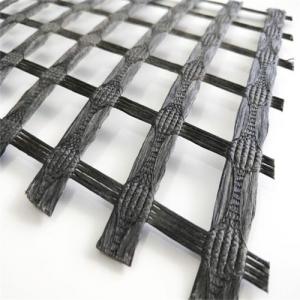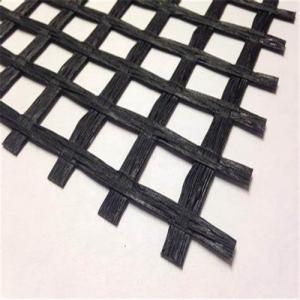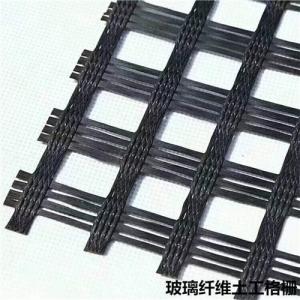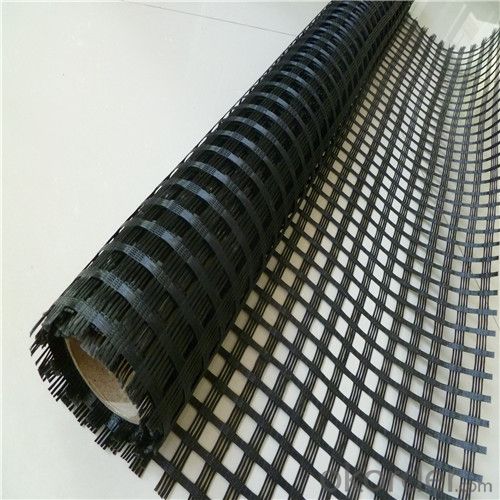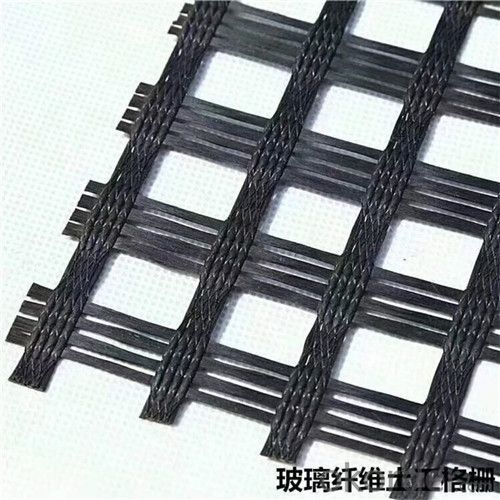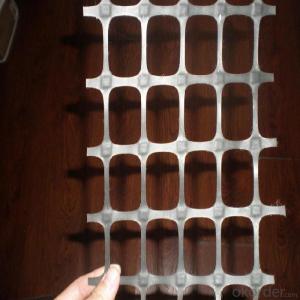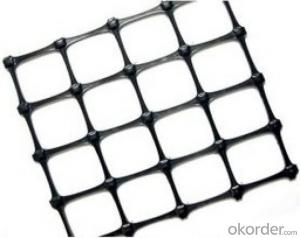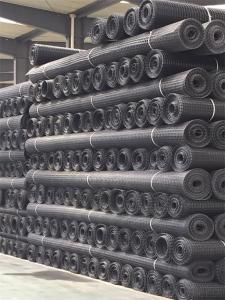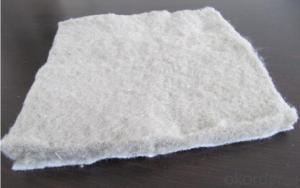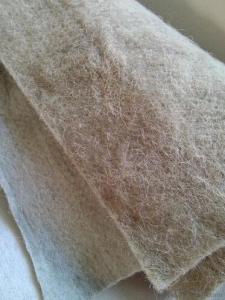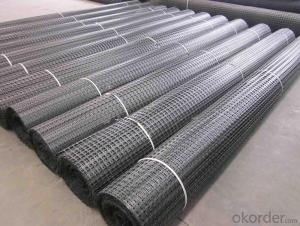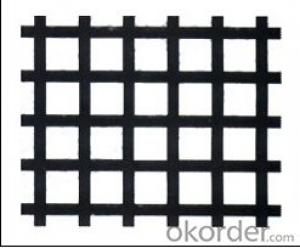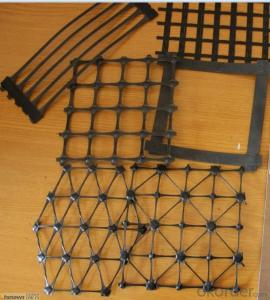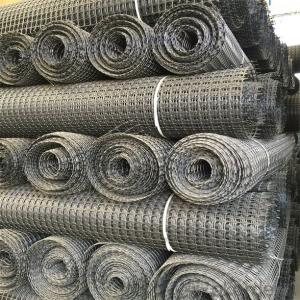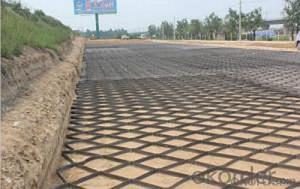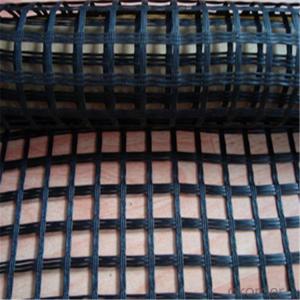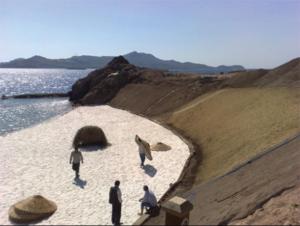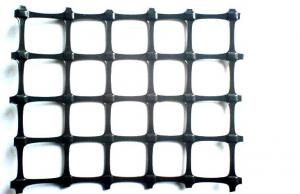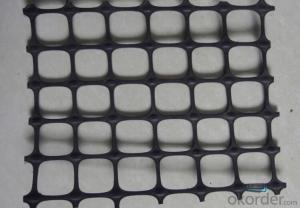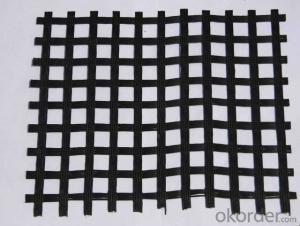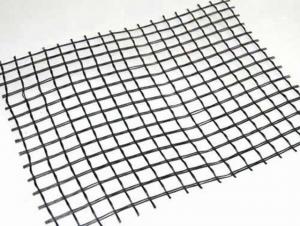Fiberglass Geogrid with High Tensile Strength Warp Knitted
- Loading Port:
- Qingdao
- Payment Terms:
- TT or LC
- Min Order Qty:
- 20000 m²
- Supply Capability:
- 50000000 m²/month
OKorder Service Pledge
OKorder Financial Service
You Might Also Like
Fiberglass Geogrid Introduction:
Fiberglass geogrid is a kind of planar mesh material using alkalifree fiberglass yarn as base body and then coated with high quality modified asphalt. It is warp knitted with oriental structure which gives full play of yarn strength and improves its mechanical property to make the product high tensile, tearing and creep resistant. Moreover, the composite property of coating with asphalt makes full protection of the fiberglass matrix and greatly improves its wear and shear resistance. All the advantageous functions make the product have a good performance in pavement strengthening, track cracking and solving difficulties of strengthening the bituminous pavement.
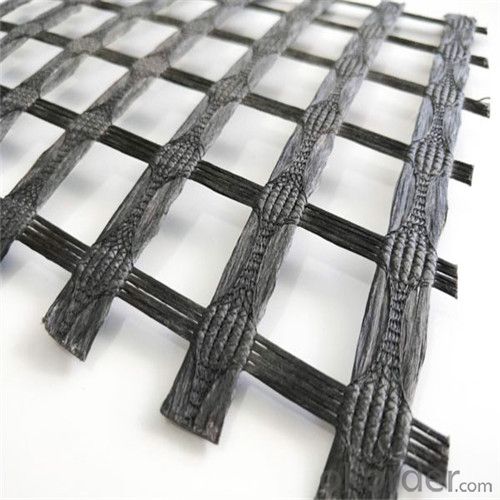
Fiberglass Geogrid Specification:
Specifications | FG20-20 | FG30-30 | FG40-40 | FG50-50 | FG80-80 | FG100-100 | FG120-120 |
Elongation(%) | 4% | ||||||
Vert Tensile strength(KN/m) | 20 | 30 | 40 | 50 | 80 | 100 | 120 |
Horiz Tensile strength(KN/m) | 20 | 30 | 40 | 50 | 80 | 100 | 120 |
Grid(mm) | 12.5×12.5 20×20 24.5×24.5 | ||||||
Width(m) | 1—6 | ||||||
Fiberglass Geogrid Features:
1. Light weight, high tensile strength, high modulus, low elongation and good toughness.
2. Corrosion resistance, no long-term creep, long life span.
3. Good physical and chemical stability and good thermal stability.
4. Resistant to fatigue cracking, high-temperature track and low temperature shrinkage cracking.
5. Delaying and decreasing crack reflection.
Fiberglass Geogrid Application:
1. Road surface asphalt overlay construction engineering; Asphalt layers reinforcement.
2. Converting old cement concrete road into composite road; Restraining reflection cracking caused by block shrinkage.
3. Road extension; Preventing and controlling the cracking caused by new and old combination and uneven settlement.
4. Treatment of the conjunction between tunnel and bridge or foundation.
FAQ:
1. How to order your geogrid ?
a) Tensile strength in warp & weft direction
b) Grid size
c) Roll Width and length
d) Quantity
2. What is the Payment term?
a) TT
b) LC AT SIGHT
c) cash
d) 30% contact value as deposit ,the blance 70% be paid after received the copy of bl .
3. Delivery time
a) 19-25 days after received your depsit .
4. What is MQQ ?
a) 2500 m2 as MQQ , we can also produce sample for you .
Welcome to send your inquiry to us, and if you have any question, we can also help you.
- Q: Can geogrids be used in reinforcement of underground stormwater detention systems?
- Yes, geogrids can be used in the reinforcement of underground stormwater detention systems. Geogrids provide stability and strength to the system, preventing soil erosion and maintaining the structural integrity of the underground system. They are often used to reinforce the walls and base of the detention system, ensuring its long-term performance and effectiveness in managing stormwater.
- Q: What are the factors affecting the design of geogrid-reinforced structures?
- Some factors affecting the design of geogrid-reinforced structures include the type and properties of the soil, the desired strength and stability of the structure, the anticipated loads and stresses, the environmental conditions, the geometry and layout of the structure, and the availability and cost of materials.
- Q: How do geogrids help in load distribution?
- Geogrids help in load distribution by providing reinforcement and stability to soils. They are designed to distribute loads over a wider area, reducing the concentration of stress on the soil and improving its load-bearing capacity. The geogrids interlock with the soil particles, creating a stronger and more cohesive structure that can withstand heavier loads without excessive settlement or deformation. Overall, geogrids enhance the load-bearing performance of soils, preventing localized failures and promoting a more even distribution of forces.
- Q: Can geogrids be used in ground improvement for industrial facilities?
- Yes, geogrids can be used in ground improvement for industrial facilities. Geogrids are commonly used in construction to stabilize and reinforce soils. They can be installed to enhance the load-bearing capacity of the ground, control settlement, prevent soil erosion, and improve the overall stability of the site. In the case of industrial facilities, where heavy machinery and equipment may be present, geogrids can provide a cost-effective and efficient solution for ground improvement, ensuring the safety and stability of the infrastructure.
- Q: Are geogrids suitable for reinforcement of mechanically stabilized earth slopes?
- Yes, geogrids are suitable for the reinforcement of mechanically stabilized earth slopes. Geogrids provide effective reinforcement by distributing tensile forces and enhancing soil stability. They help to prevent slope failure, control erosion, and increase overall slope strength. Additionally, geogrids are easy to install and have a long lifespan, making them a reliable choice for reinforcement in mechanically stabilized earth slopes.
- Q: What are the factors that affect the durability of geogrids?
- The factors that affect the durability of geogrids include the material composition and quality, manufacturing method, exposure to environmental conditions (such as UV radiation, temperature variations, and moisture), installation techniques, and proper maintenance.
- Q: How is a geogrid different from other geosynthetic materials?
- A geogrid is different from other geosynthetic materials in that it is specifically designed to provide high tensile strength and stiffness. Unlike other geosynthetics such as geotextiles or geomembranes, which are primarily used for filtration, separation, or containment purposes, geogrids are used to reinforce and stabilize soil structures. Geogrids have a grid-like structure that enhances their ability to distribute loads and improve the overall strength of the soil, making them ideal for applications like road construction, retaining walls, and slope stabilization.
- Q: Do geogrids affect groundwater flow?
- No, geogrids do not affect groundwater flow.
- Q: Are geogrids suitable for use in railway ballast reinforcement?
- Yes, geogrids are suitable for use in railway ballast reinforcement. Geogrids provide effective reinforcement by distributing load and reducing lateral movement of the ballast, thus enhancing the stability and longevity of railway tracks.
- Q: Are geogrids suitable for use in mechanically stabilized embankments?
- Yes, geogrids are suitable for use in mechanically stabilized embankments. Geogrids provide reinforcement and stability to the embankment by distributing and restraining the forces exerted on the soil. They help prevent the lateral movement of the soil and improve load-bearing capacity, making them a reliable choice for mechanically stabilized embankments.
Send your message to us
Fiberglass Geogrid with High Tensile Strength Warp Knitted
- Loading Port:
- Qingdao
- Payment Terms:
- TT or LC
- Min Order Qty:
- 20000 m²
- Supply Capability:
- 50000000 m²/month
OKorder Service Pledge
OKorder Financial Service
Similar products
Hot products
Hot Searches
Related keywords

